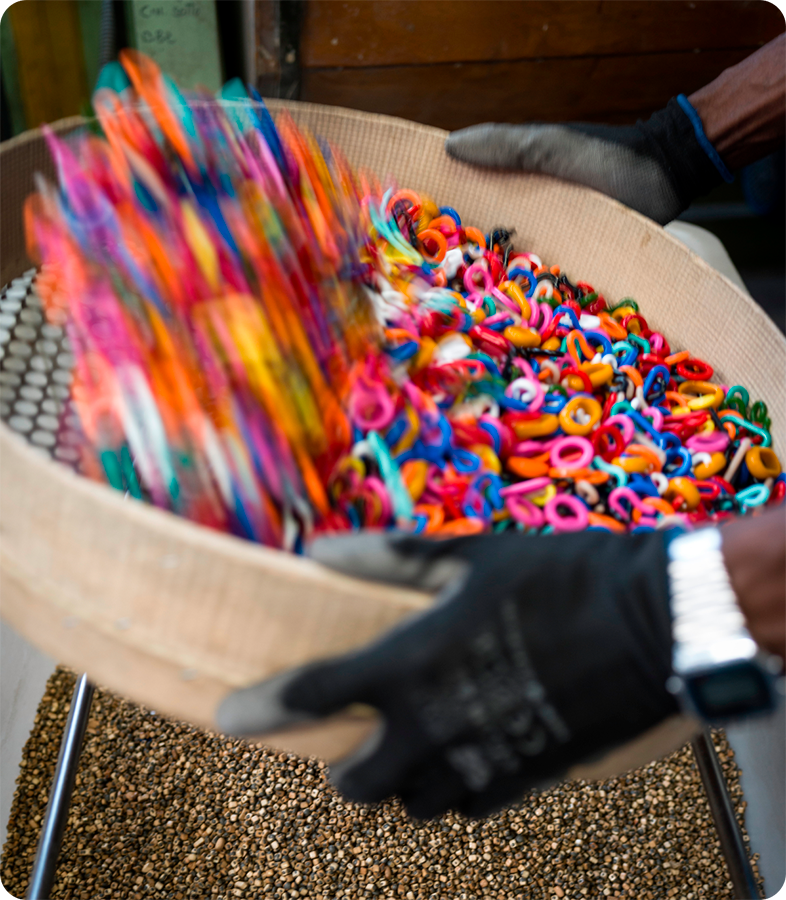
production
Behind every single component - even the smallest one - lies a world made up of long-time experience, technology, craftsmanship and even some secrets.
How matter
is shaped
to suit your needs
is shaped
to suit your needs
Behind every single component - even the smallest one - lies a world made up of long-time experience, technology, craftsmanship and even some secrets.
Modelling
Preparing the mould
At Mabel, ideas take the desired shape in an accurate, swift and efficient way. First of all, starting from the drawing, a resin model is created, from which the 'male' model is obtained. This can be in steel or copper, depending on the chosen technique - steel for coining, copper for wire erosion. From the male model, the 'female' steel mould (the cavity) is then shaped. In our catalogue we already have 150,000 ready-to-use cavities and cores, which can be combined with the 500 different mould types of our vast inventory. These processes require great expertise, which is what makes all the difference in obtaining top-notch results. In addition to this, prototyping times are today drastically reduced thanks to our 3D printer.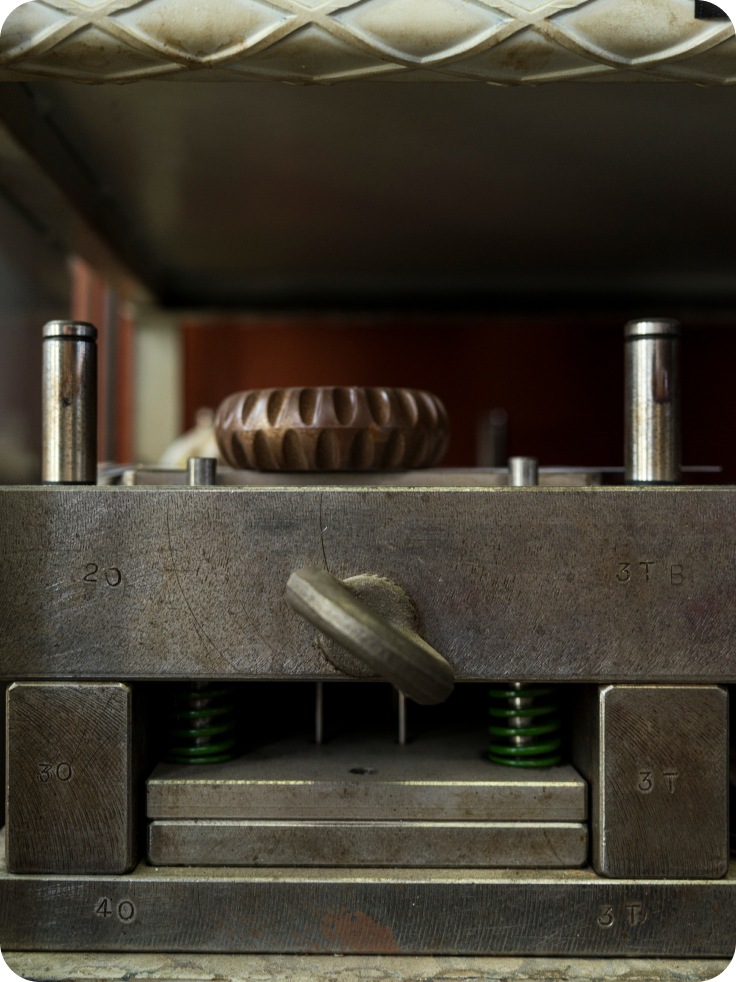
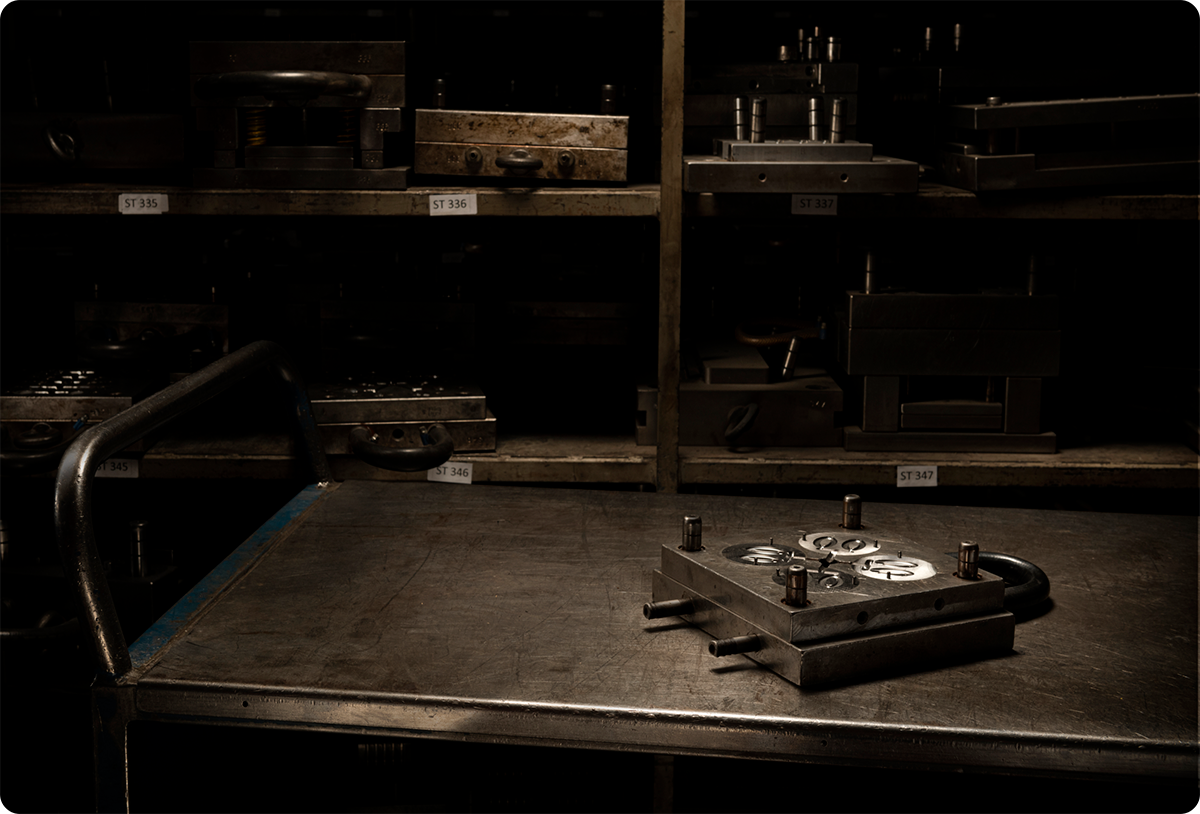
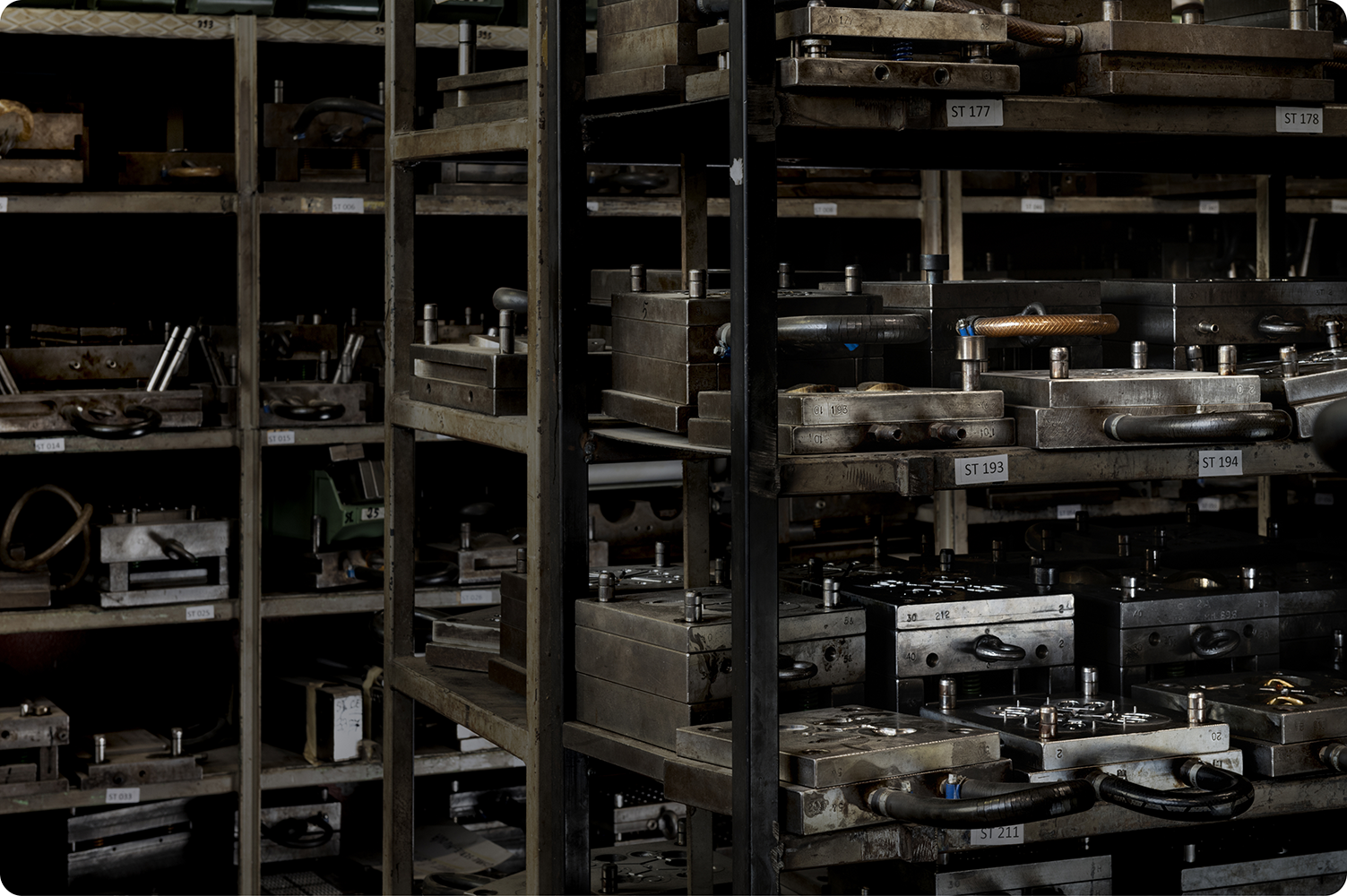
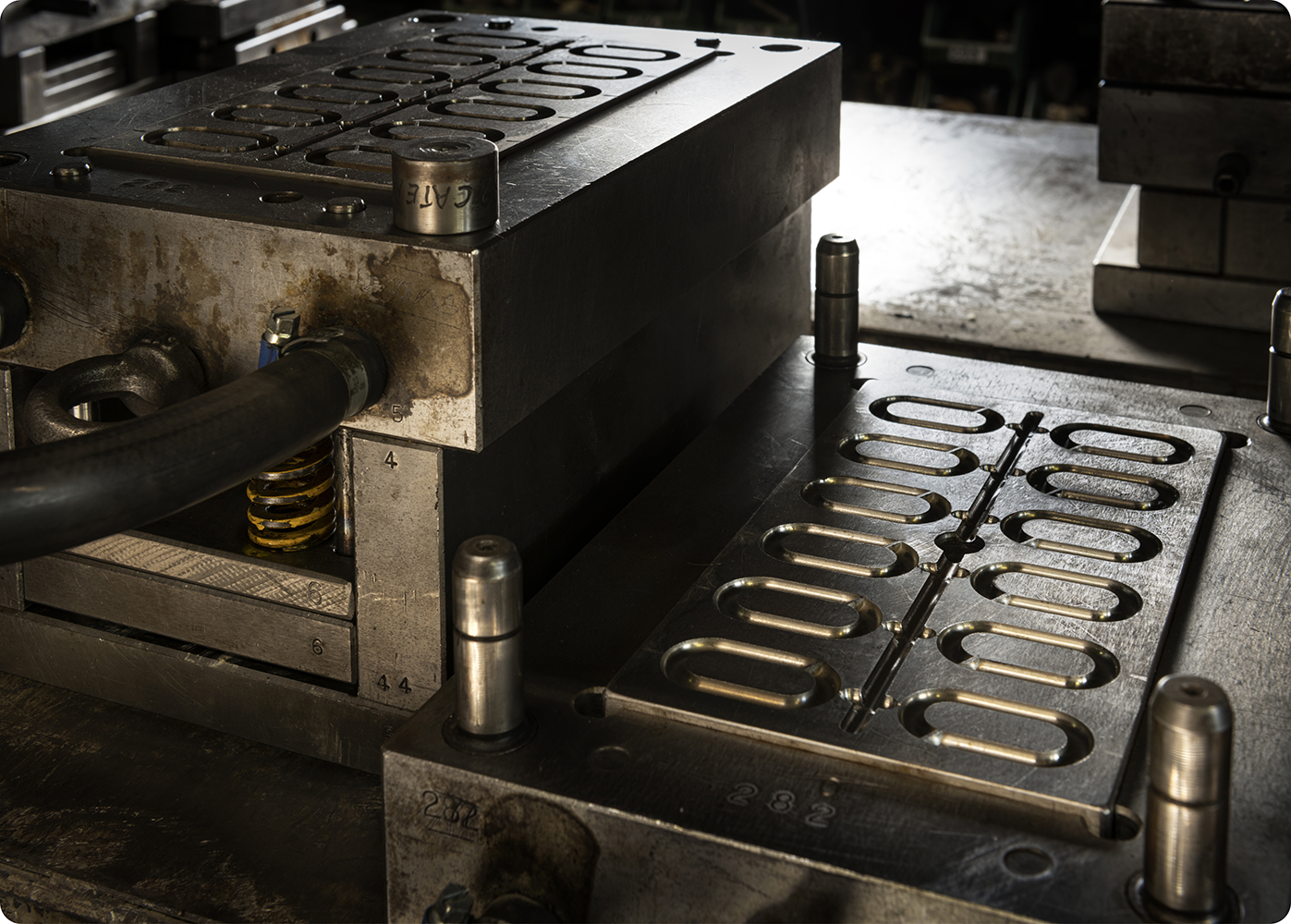
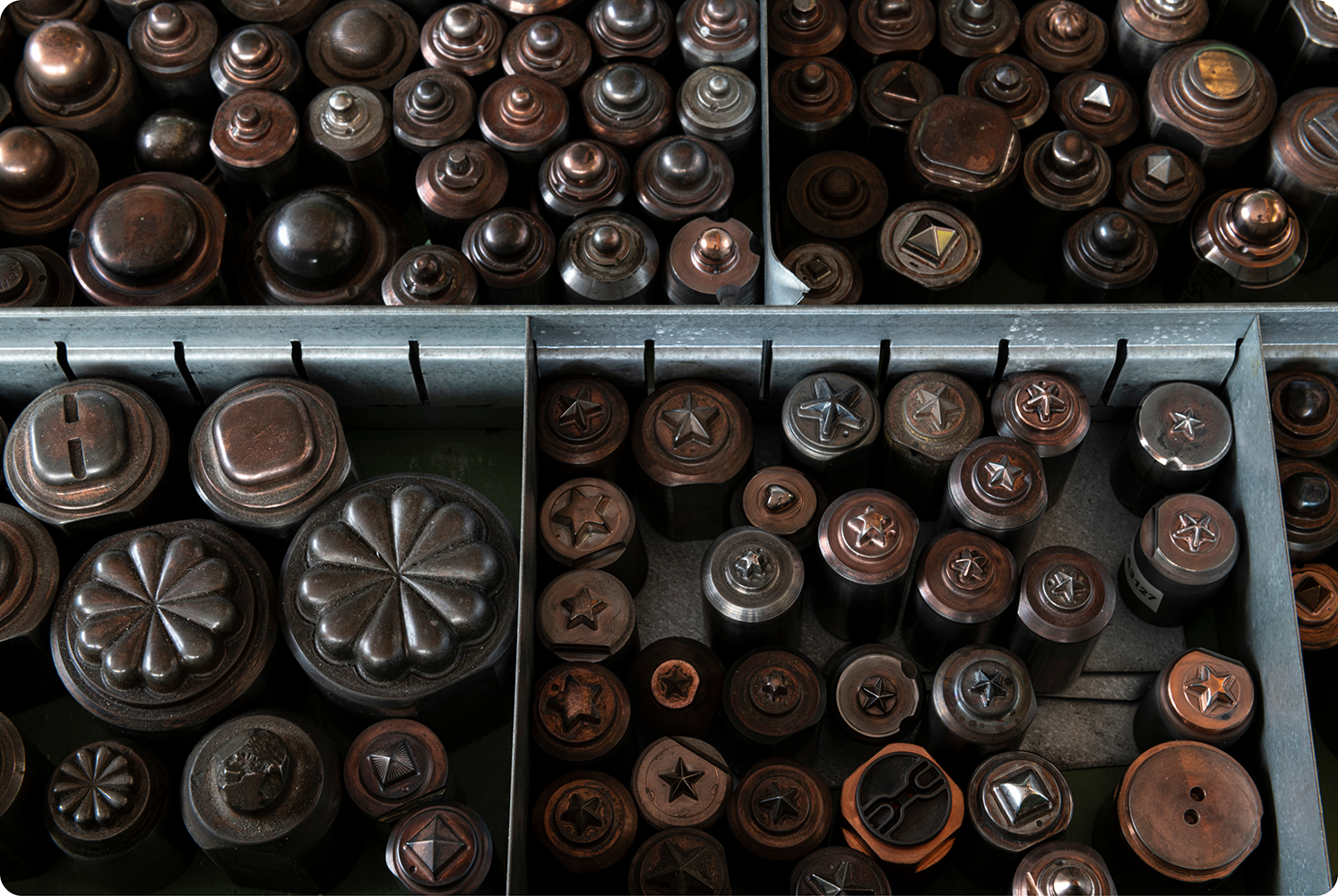
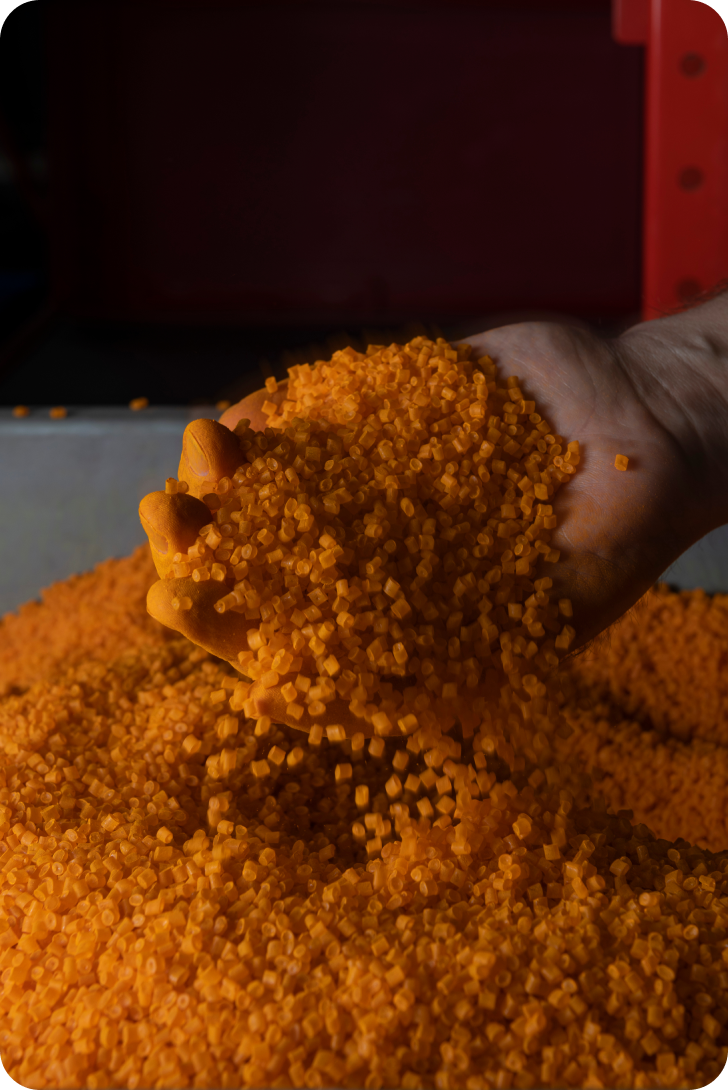
Matter
Raw materials
Shape and matter: 60 years of history and innovation. As a company focused on sustainability, Mabel is today actively committed in developing the application of bioplastics: our research follows the evolution of these new natural materials and studies their optimal use along with commonly used thermoplastics such as ABS and methacrylate. ABS is the material we have chosen for studs and one of the few suitable for galvanization. Methacrylate (also commonly referred to as acrylic) perfectly suits costume jewellery, as it allows almost unlimited finishes and colours and is polished by tumbling. We also use nylon, polystyrene and some acetate types to produce hair accessories.Air
The dehumidification
Before moulding the thermoplastics, we have to eliminate any possible moisture content in the raw material granules, as the presence of water can deteriorate the manufactured item. For this reason, the raw material is placed in special ovens and kept there for some time to remove all moisture.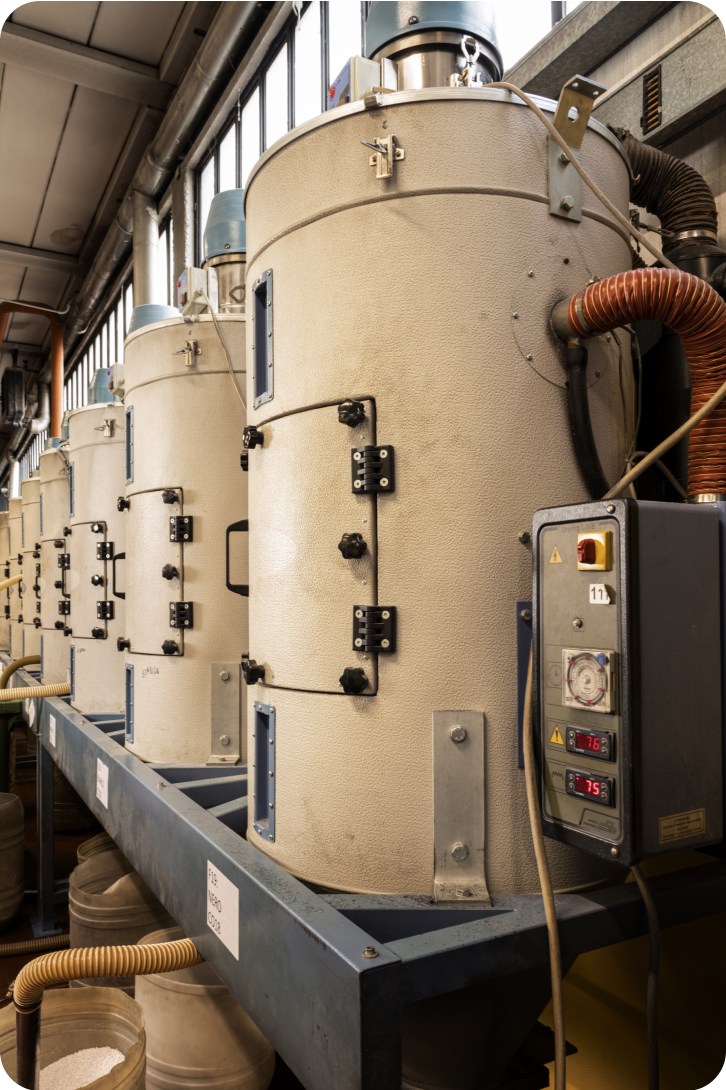
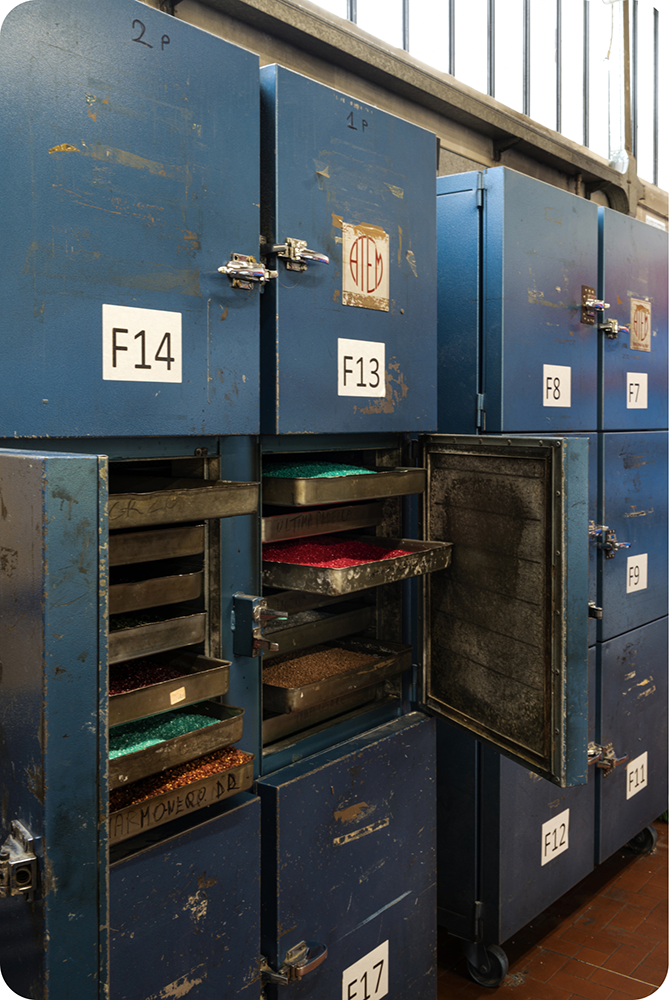
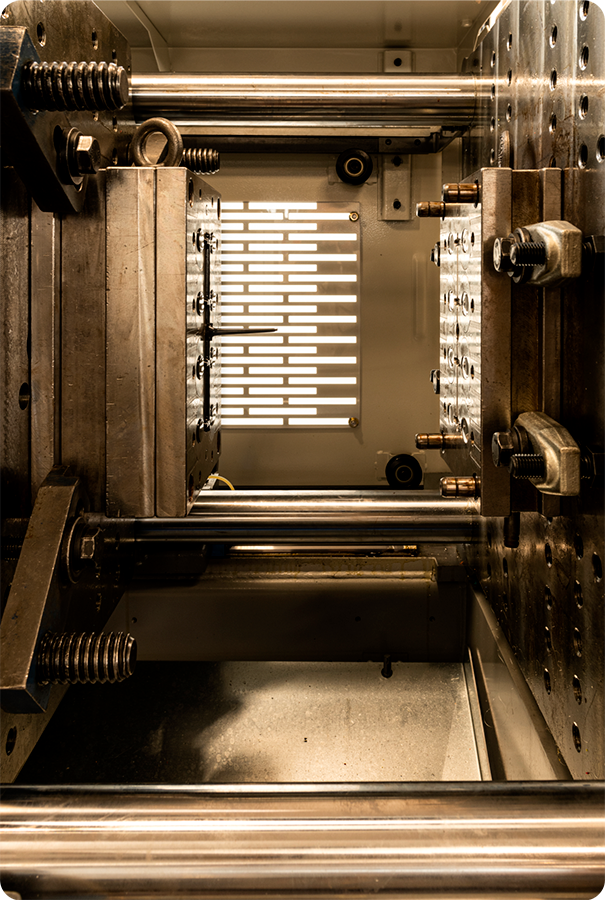
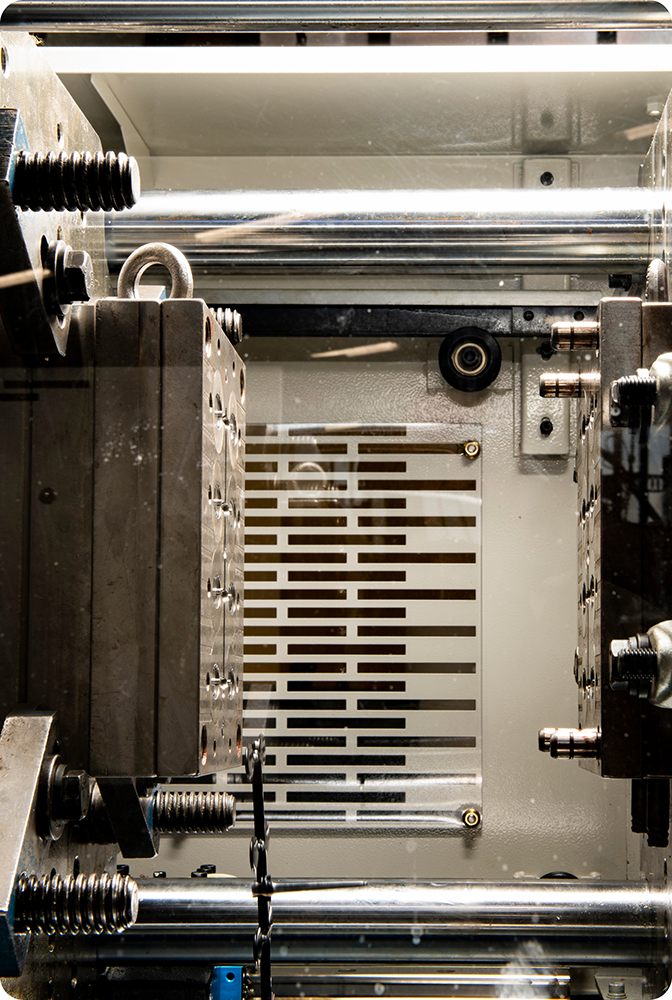
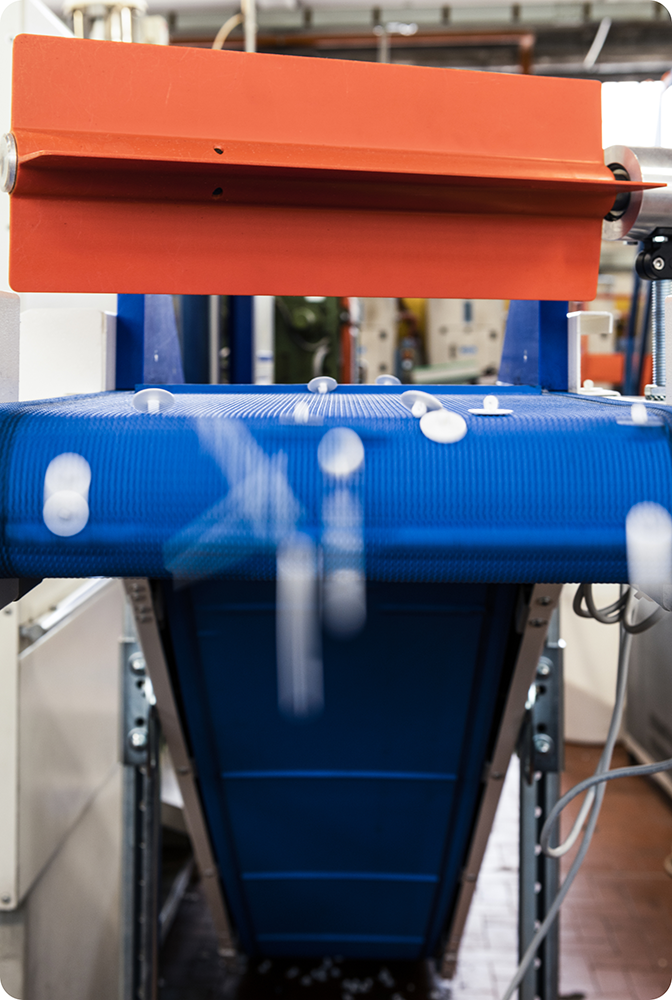
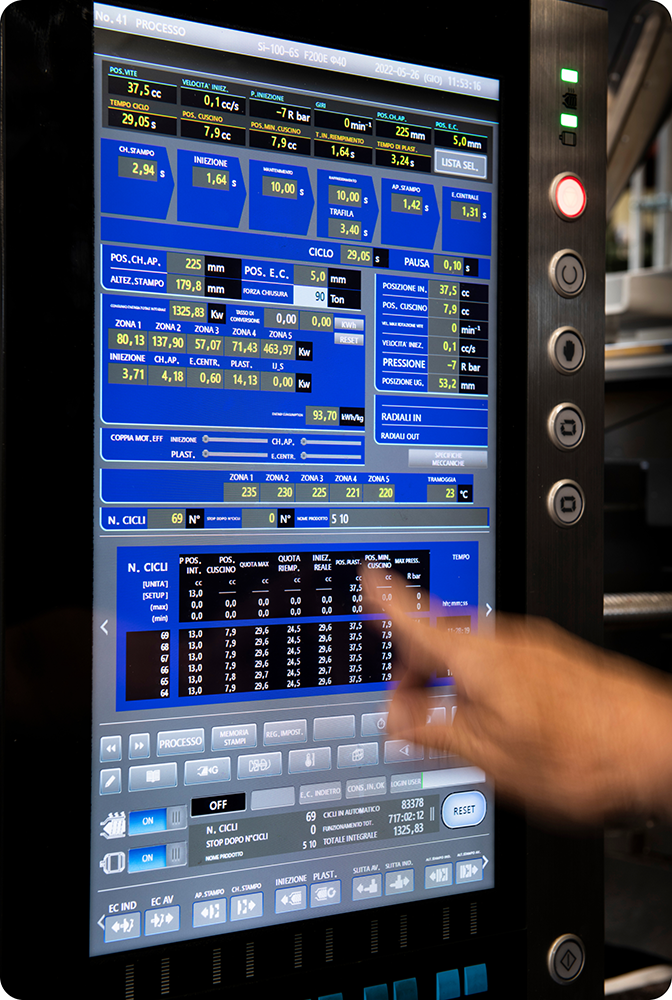
Fire
The moulding
Injection moulding is the heart of our production: in this stage the material is put into the machine and melted. The molten material is then injected at high pressure into the mould: after an initial cooling, the resulting cast is dropped into water for further cooling or directly onto the conveyor belt.At this stage, the printer’s experience and skill play a crucial role - the many tricks of the trade are what makes all the difference.
Water
The cooling
Depending on their type, certain items are dropped into water for further cooling. Otherwise, they are directly placed on the conveyor belt to reach the following production stages.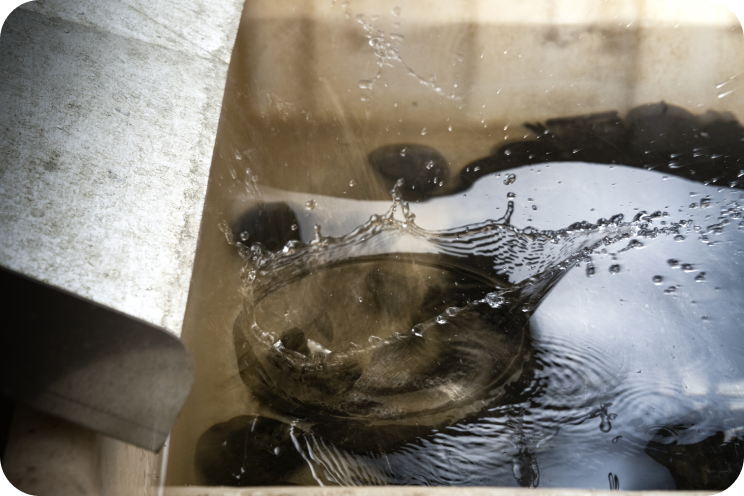
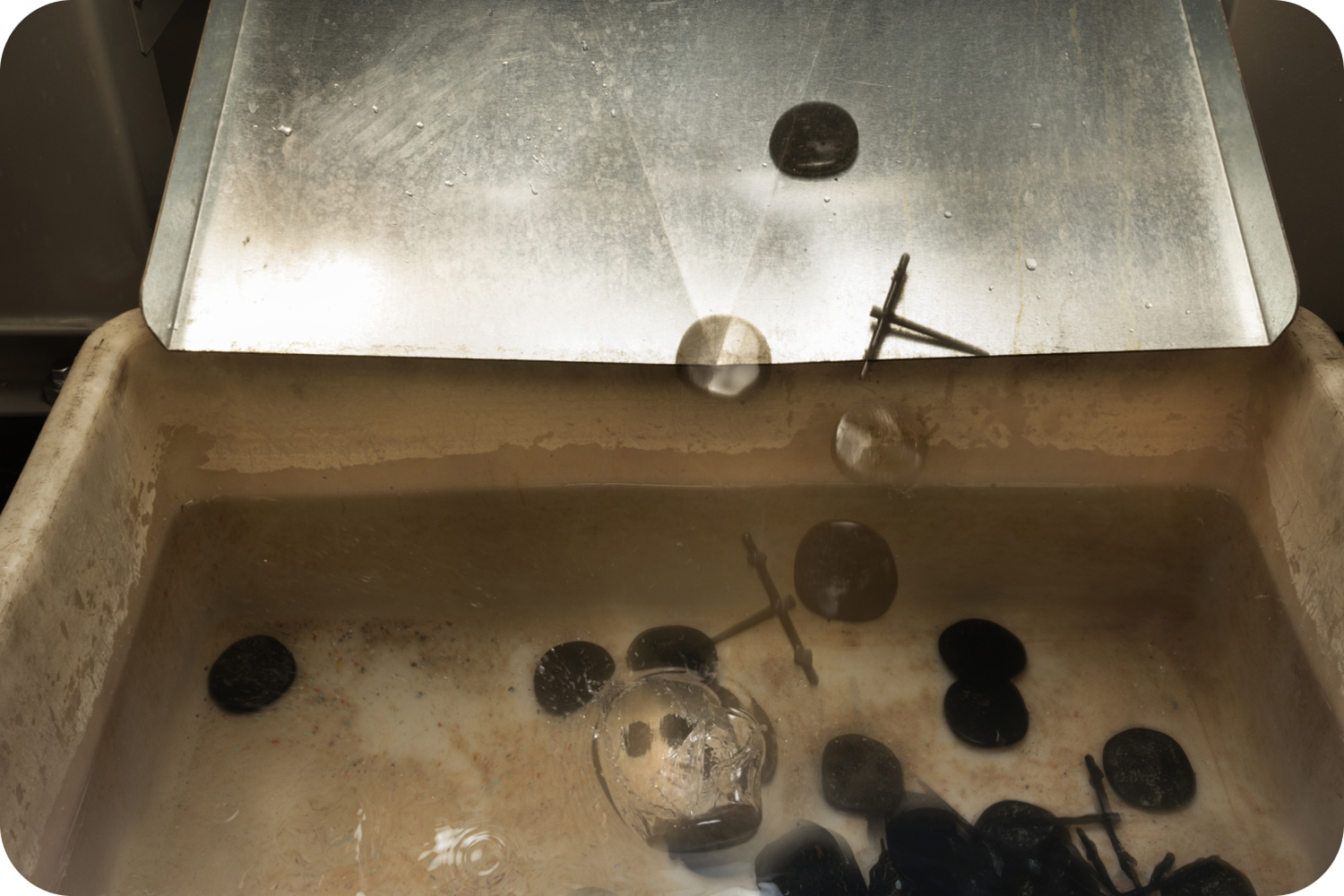
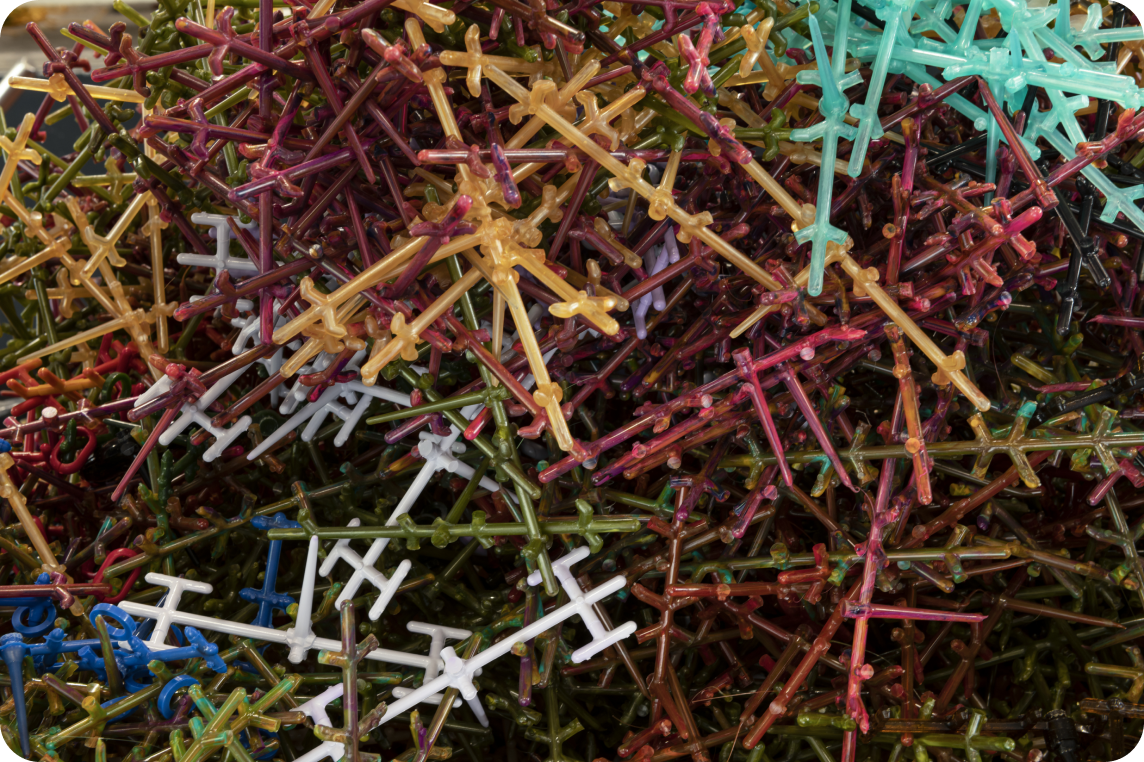
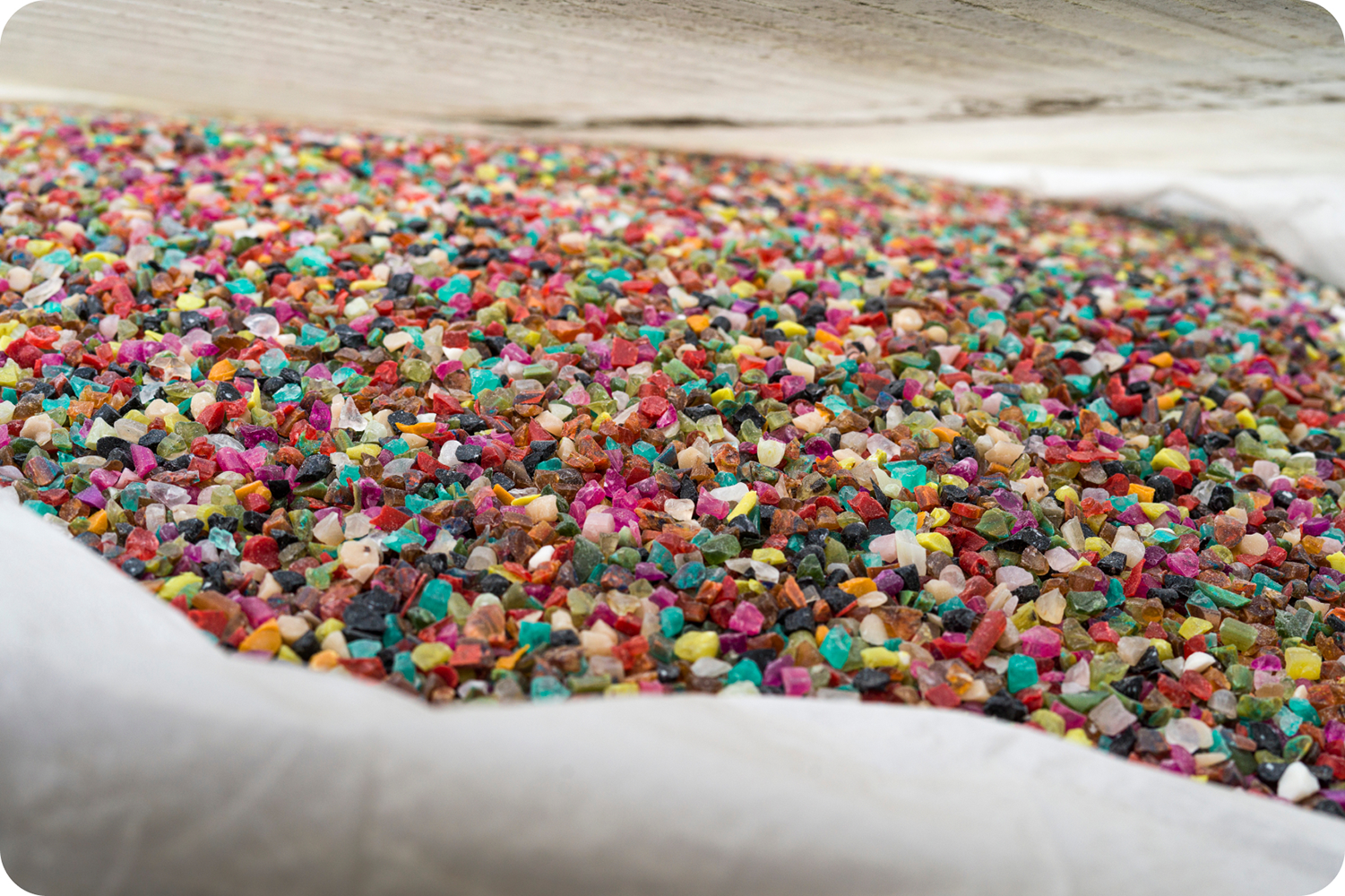
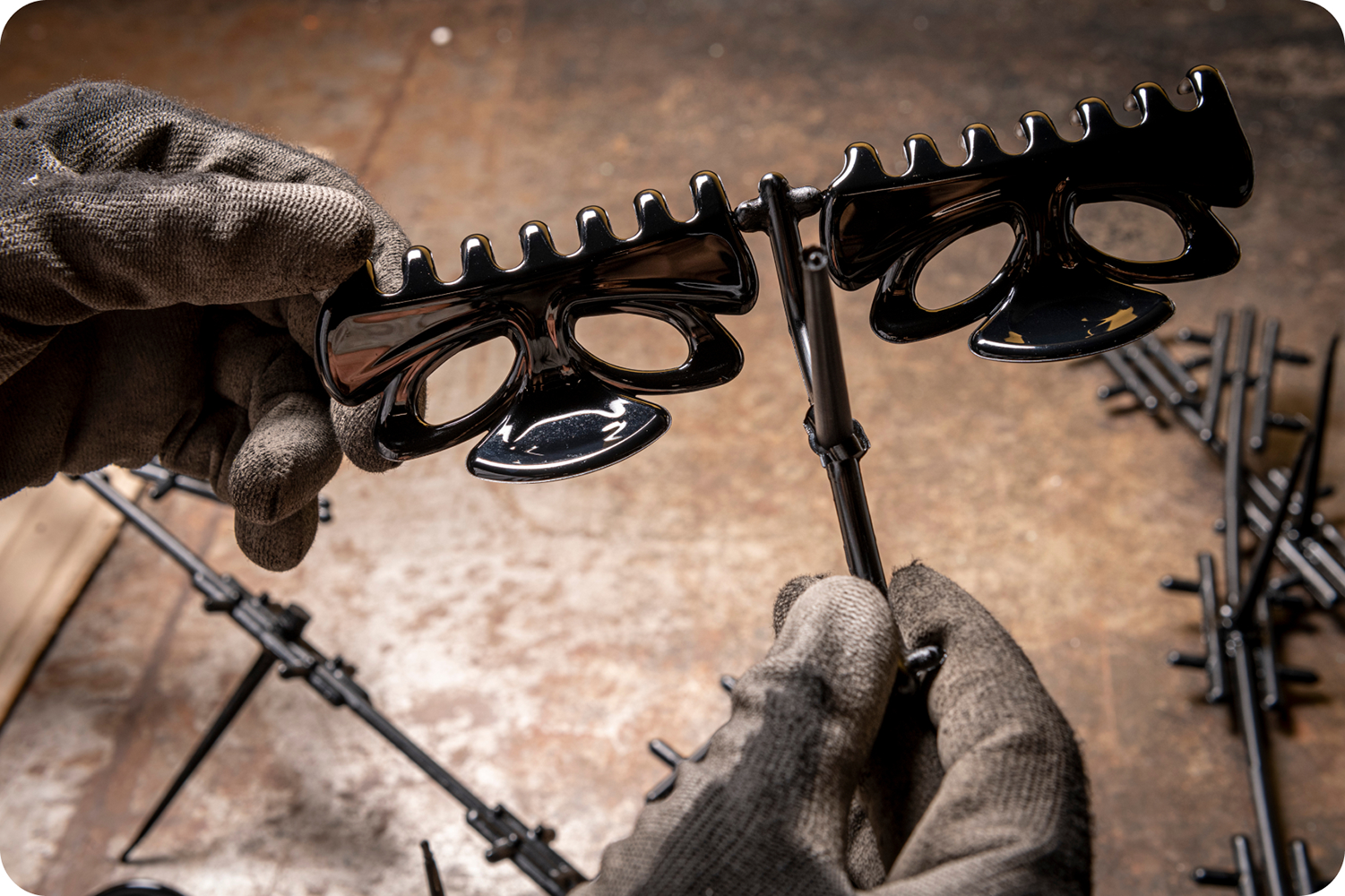
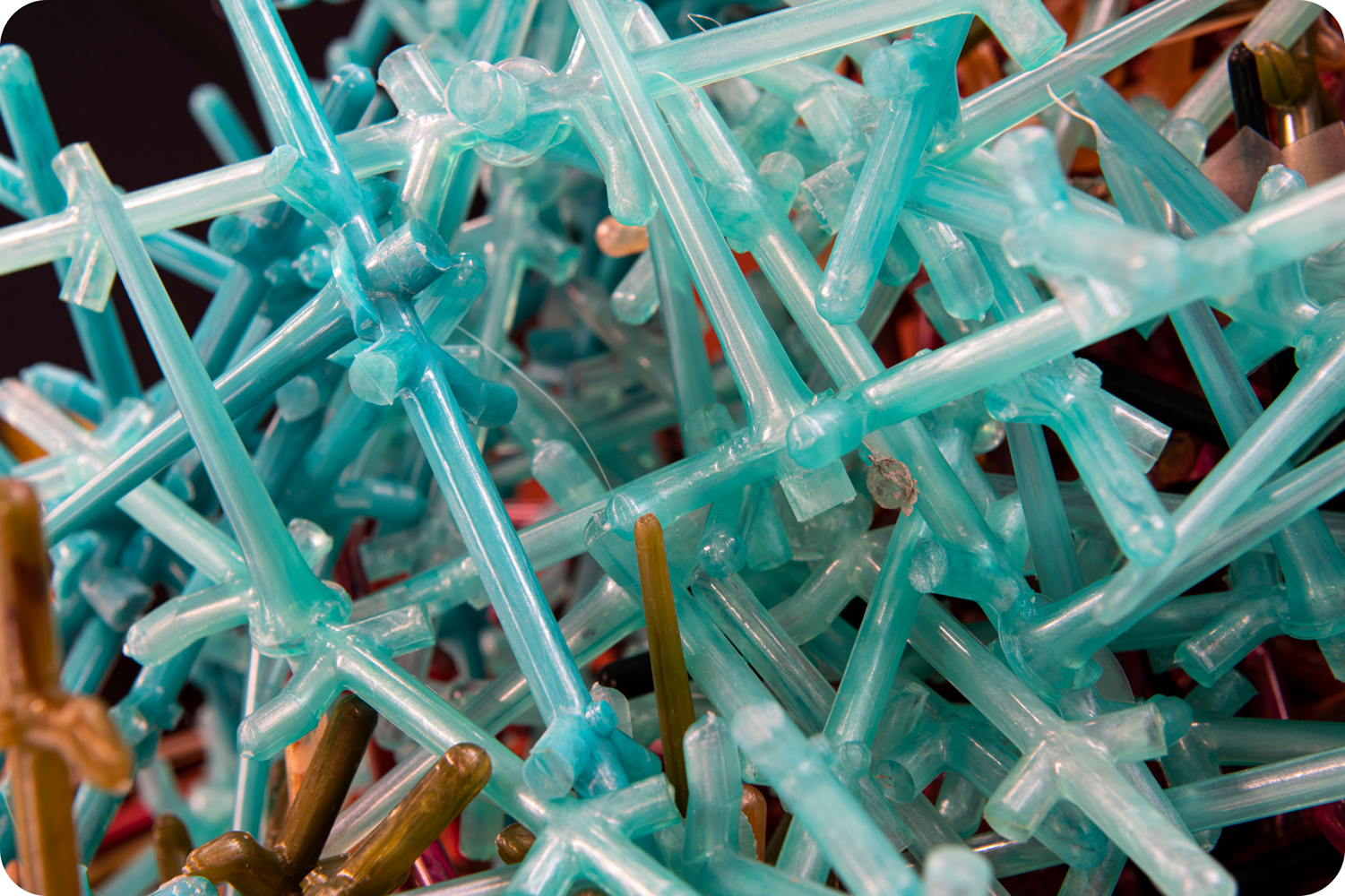
Circularity
Sprue detachment and recycling
In some mould types, after the item is casted some waste material remains attached to the sprue, which is the skeleton of the channels through which the molten material glides into the mould. In this case they must be detached manually. All the sprue wastes are collected to be reground, mixed with pure material in varying percentages according to the uses, and then used again, thus allowing their recycling. This is an important aspect from an ecological point of view.Light
Tumbling and other finishes
Some items, in particular acrylic products for costume jewellery and footwear, or chains and necklaces, require a high degree of finishing. In these cases polishing and tumbling, two highly artisanal processes, come into play. Polishing: if not yet perfect, the casted pieces are placed in metal tumbling barrels together with water and pumice, which smooths them and removes imperfections. Then they are transferred into wooden tumbling barrels containing special wood pieces and a paste that provide further polishing. This stage is followed by the washing, drying and sieving phases. In its tumbling department, Mabel jealously guards its secrets.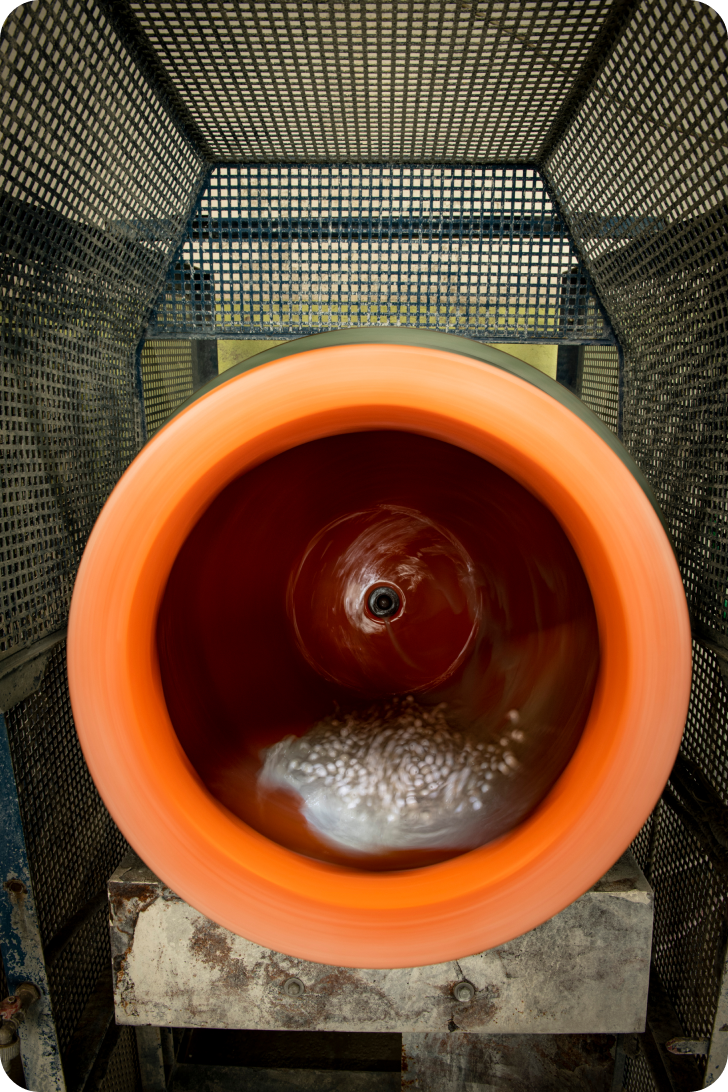
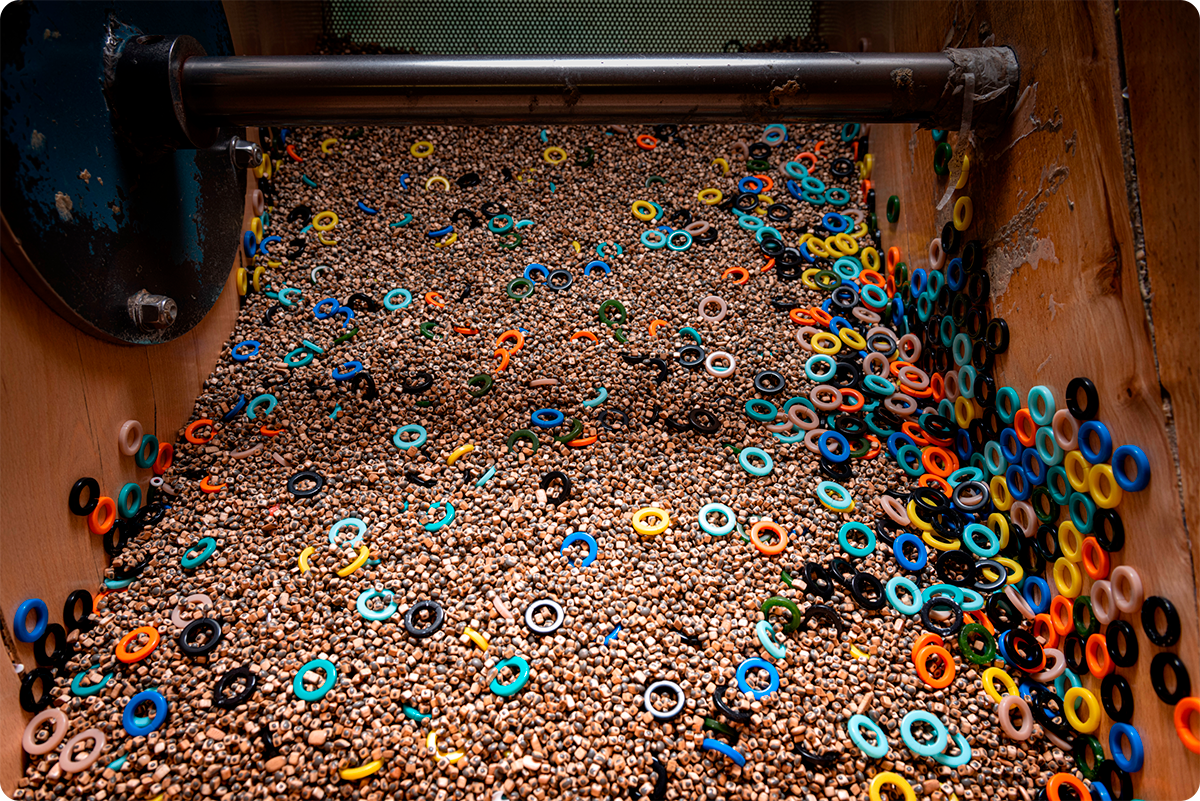
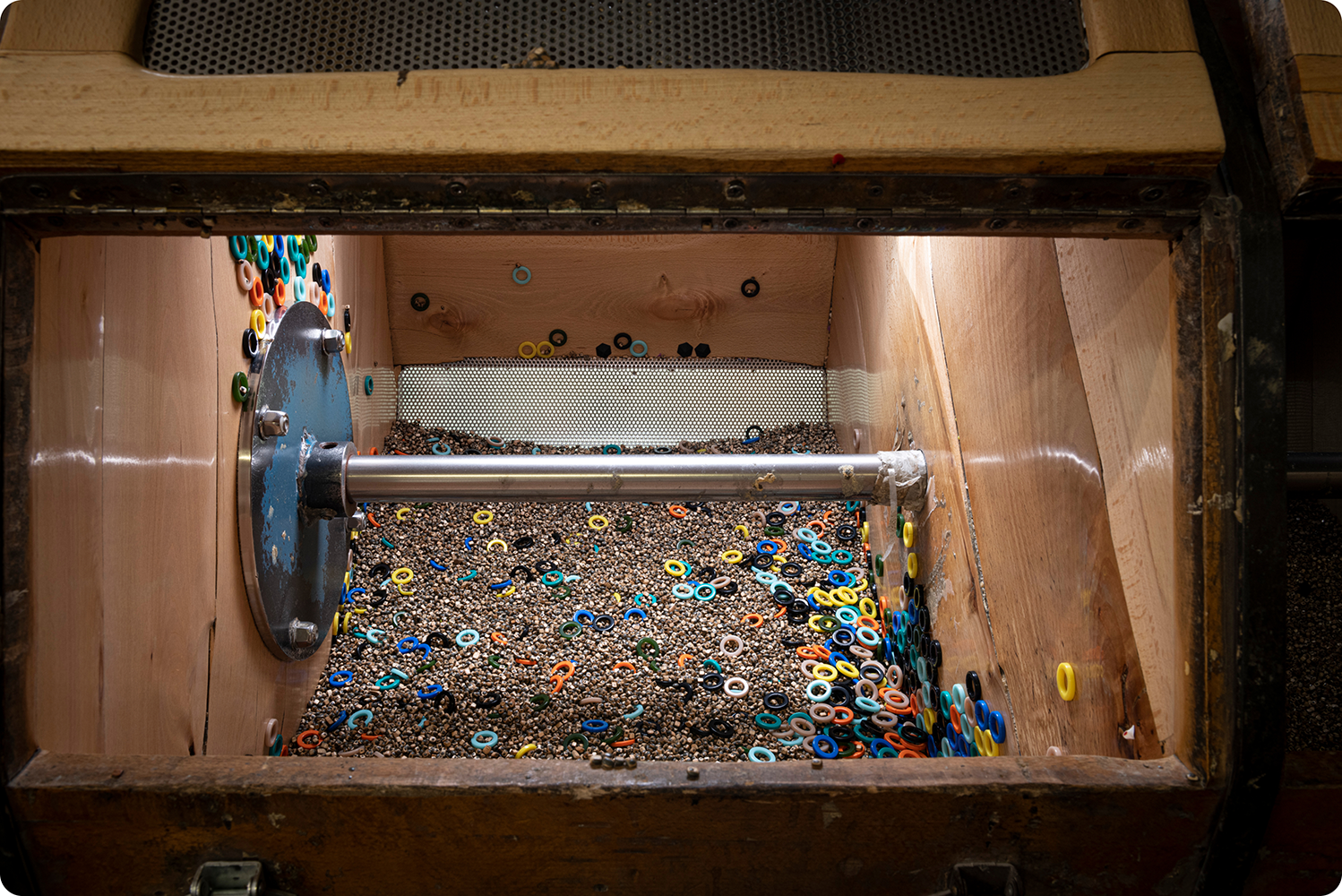
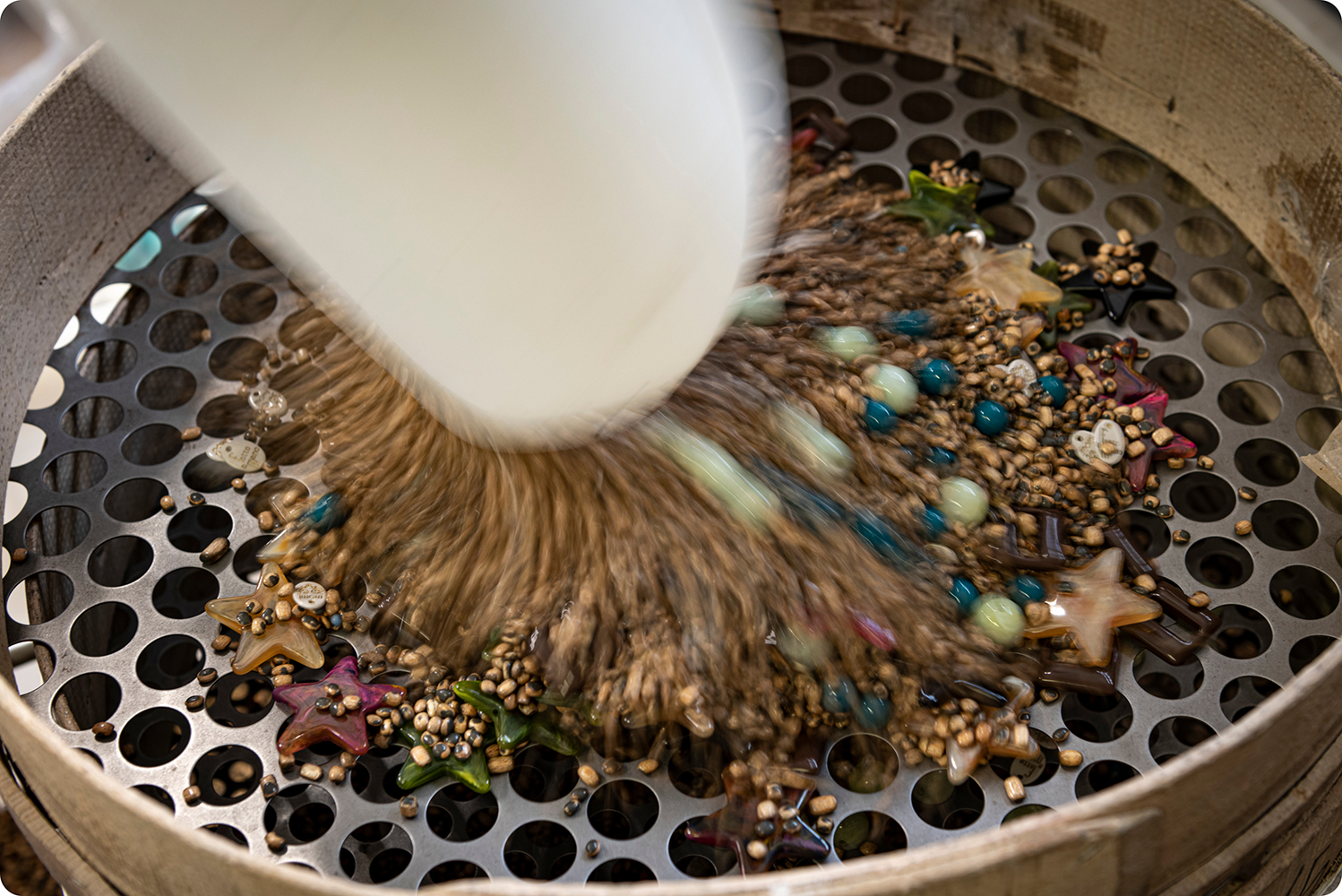
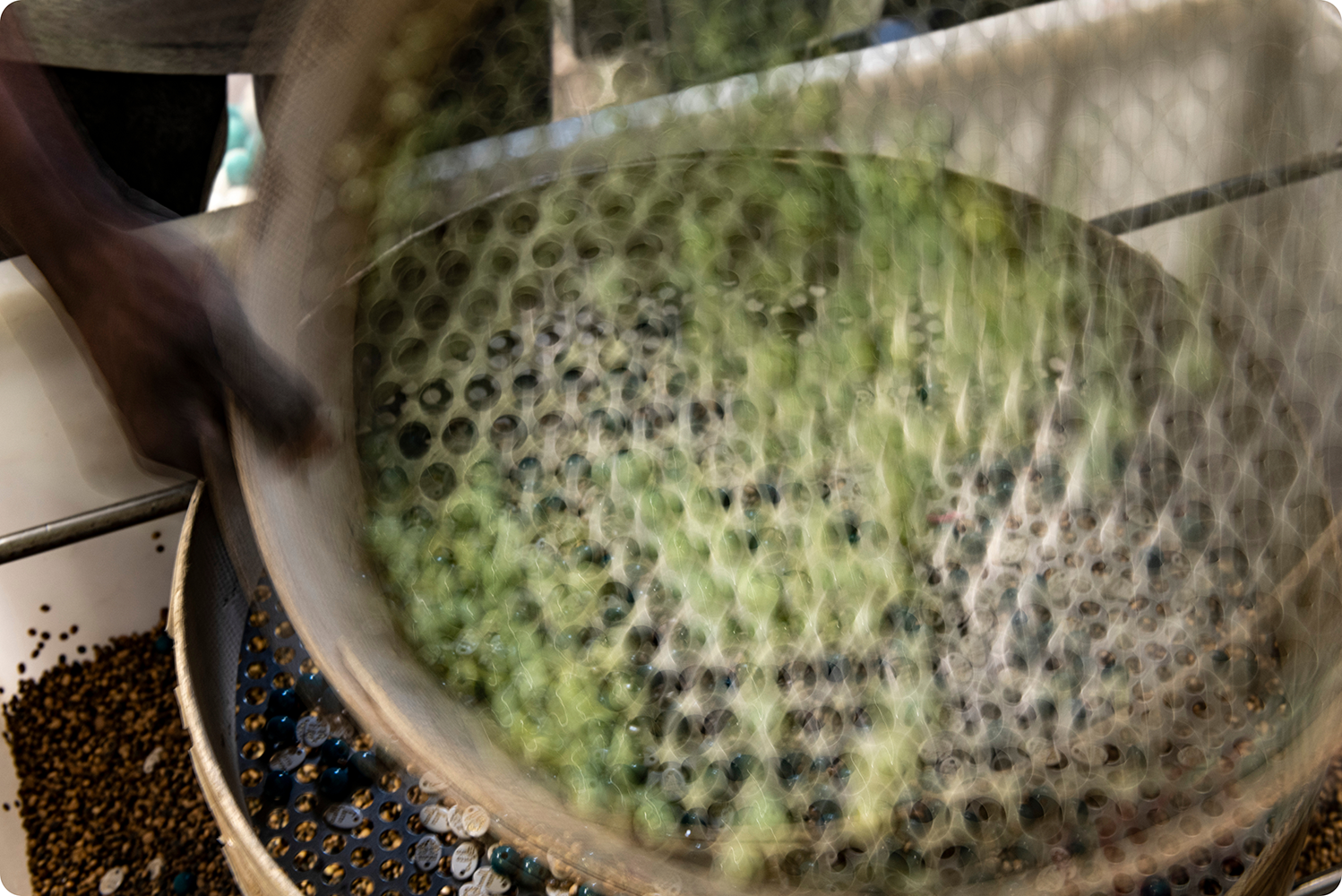
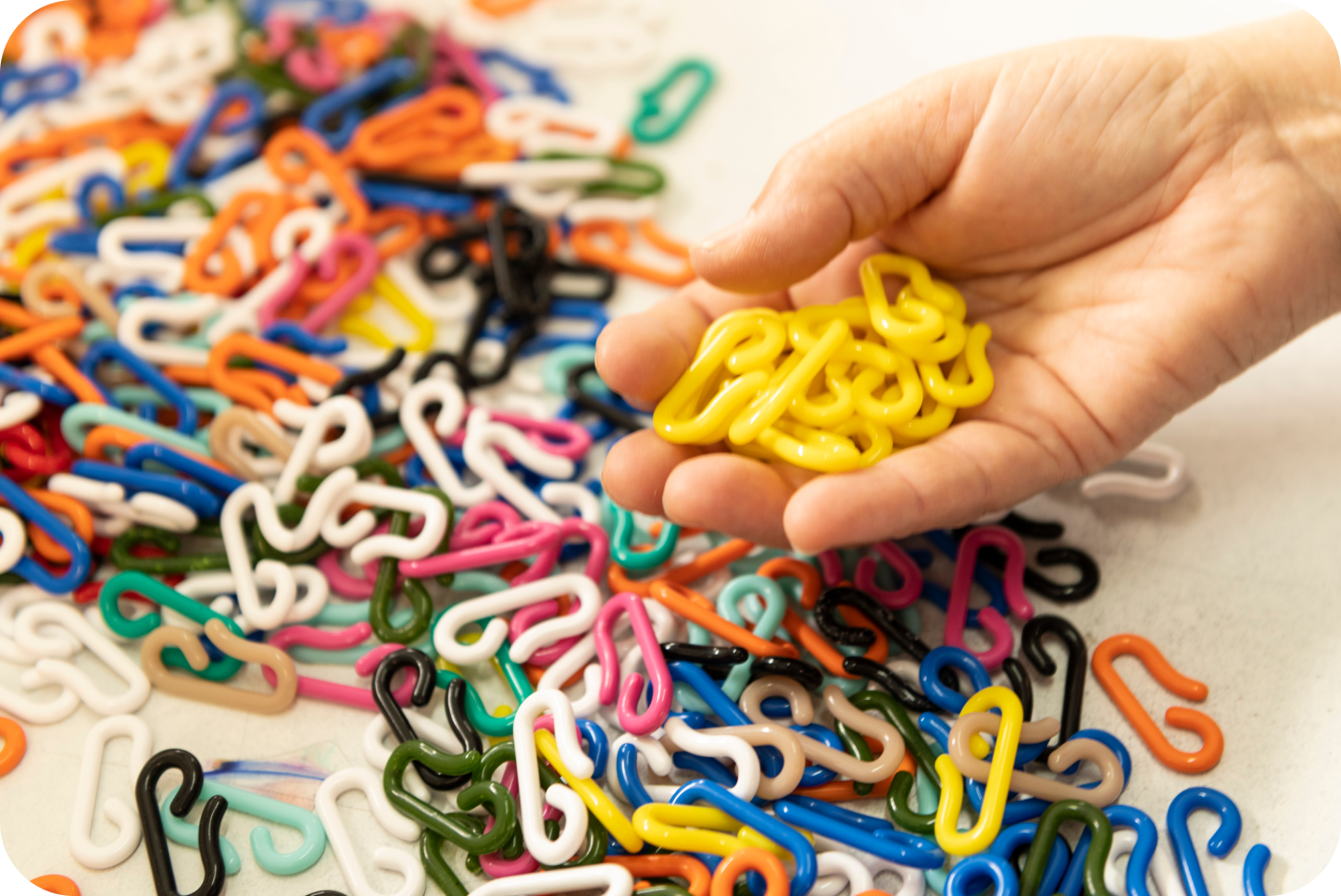
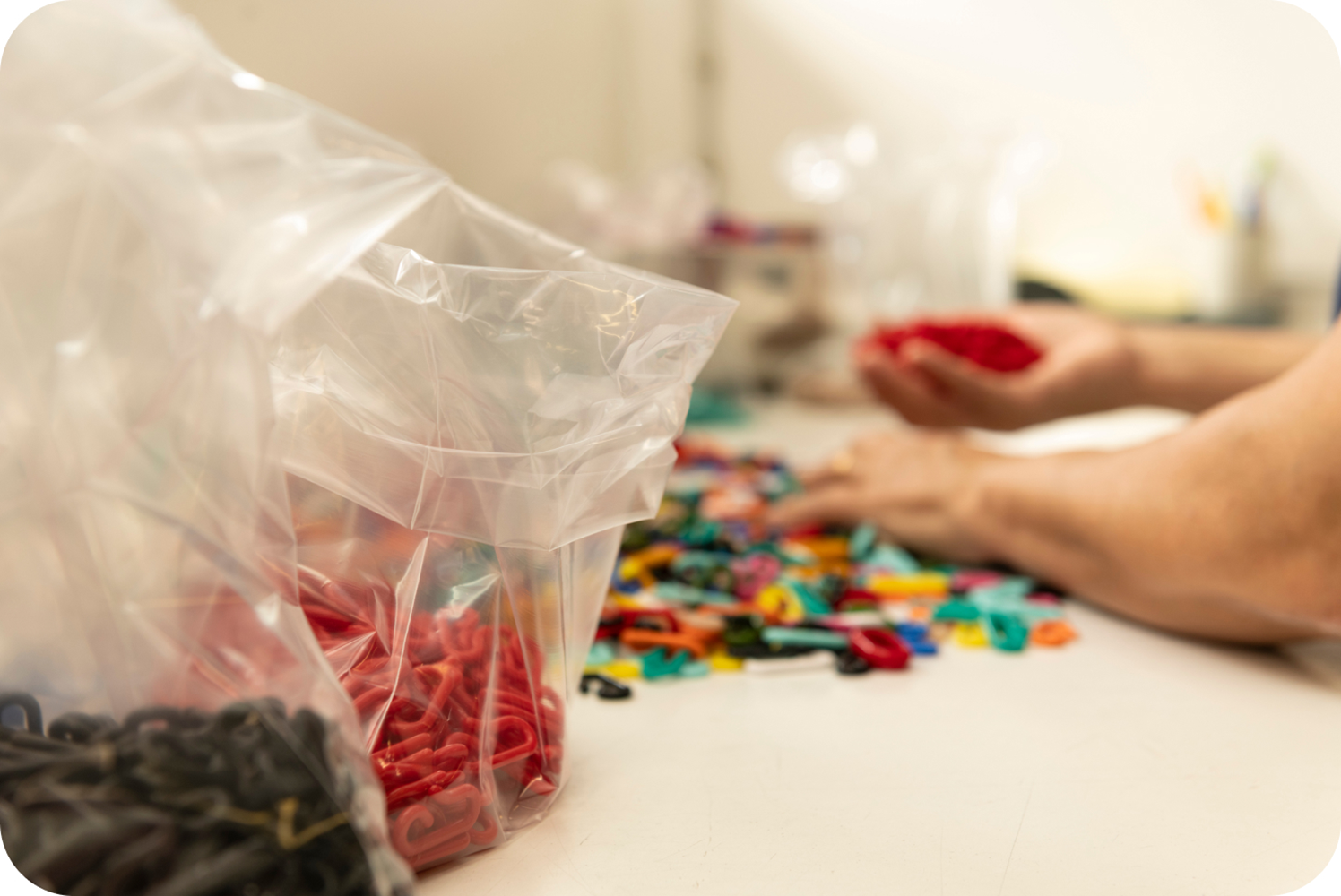
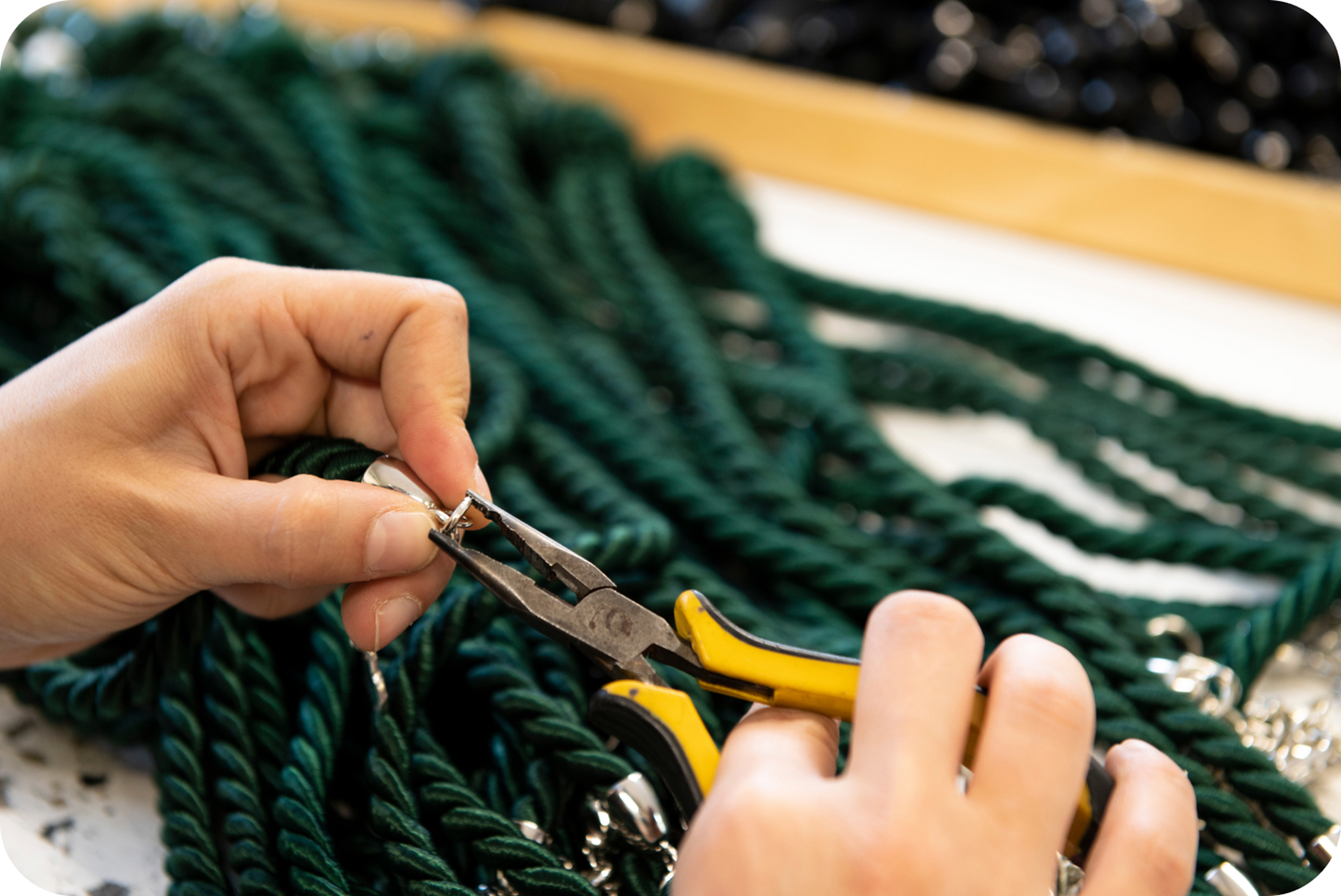
Shape
Packaging and shipping
The finished items are sorted by colour and submitted to a quality control. Some items require a further outsourced step for the metallizing or spraying phase: that is the case with studs or pearls, which are specially treated to achieve the desired finish. Costume jewellery articles must be organised according to their composition as reported in their data sheet: Mabel is at its customers’ disposal for any assembly service.This brings us to the final shipping stage.